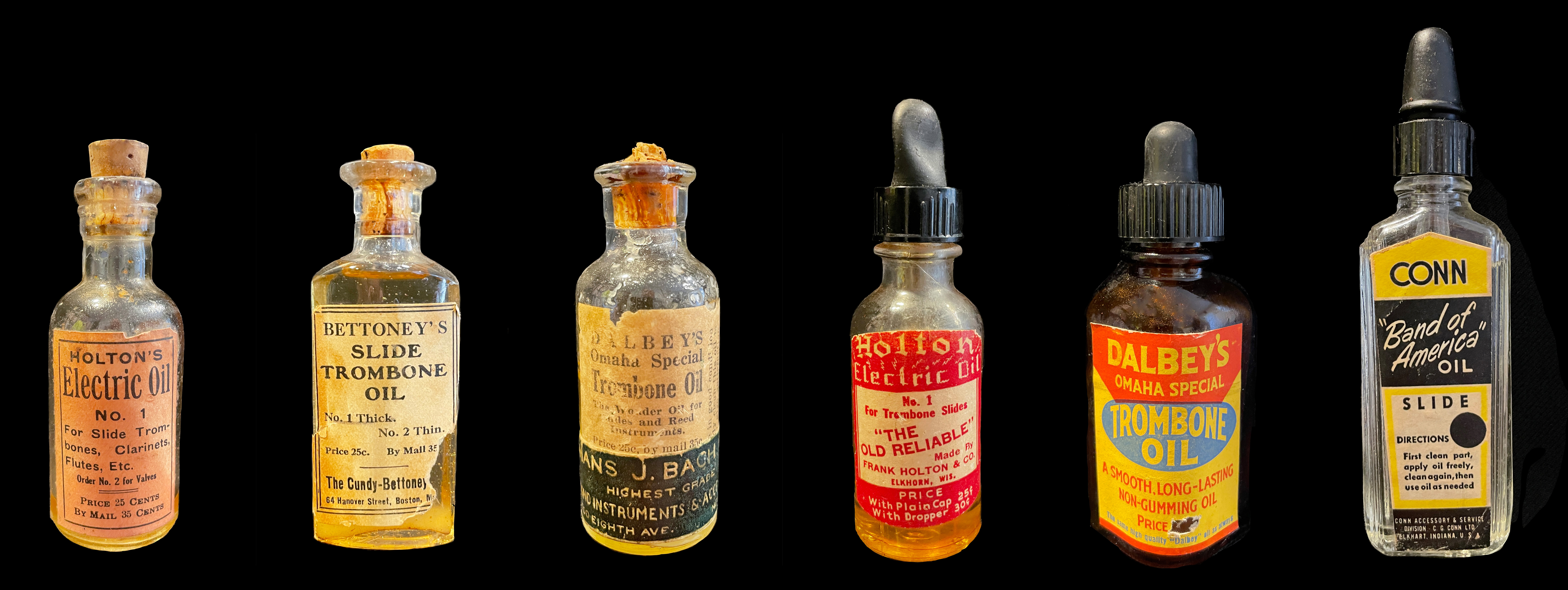Like all players who came of age to play the trombone before the 1970s, I used oil to lubricate my trombone slide. I started playing the trombone in 1964, and I ruined, to my mother's dismay, more than a few pairs of trousers when, in my enthusiasm to get my slide in good shape, oil squirted all over.
Over the years, I switched to other lubricants, including Pond's cold creme and water, Trombotine, Superslick, and Yamaha slide lubricant. Today, slide lubricants abound and each player finds something that works. We've come a long way from the nineteenth century when the first reported slide lubricant (noted in Joseph Fröhlich's Musikschule of 1813) was olive oil from Provence, France. [See Howard Weiner's article, "Trombone Slide Lubrication and other Practical Information for Brass Players in Joseph Fröhlich's Musikschule (1813)," Historic Brass Society Journal , Vol. 21, 2009 - the article is available for free download at https://www.historicbrass.org/edocman/h ... Weiner.pdf.]
For a long time, I have wondered what exactly was in the trombone slide oil that so many players inhaled for nearly a century, since Frank Holton started marketing his "Electric Oil" in 1897. I have enlisted the help of an organic chemist at Wheaton College who will be making a chemical analysis of the contents of several bottles of historical trombone slide oil that I have collected. At the same time, I am at work compiling a history of trombone slide oil and together, we plan to publish the findings in a peer-reviewed chemistry journal and the International Trombone Association Journal.
Here is a photo of the six bottles of trombone slide oil that I plan to have analyzed (I have collected many other trombone slide oil bottles but they are empty).

I'd like to know if any forum members have other bottles of historical trombone slide oil by other makers that they would be willing to sell or donate to me so I could use them in this study. The six bottles that I have will give us a good sample of the kinds of oil used by players over many years. But there are certainly other companies that made slide oil in the first half of the twentieth century. For instance, I would love to find a bottle of trombone slide oil made by the Standard Oil Company (ESSO, now EXXON). That the largest oil company in the world made trombone slide oil is something I find fascinating. See this advertisement that I recently acquired, from the Minneapolis Star Tribune, February 6, 1946:

If you have a bottle of historical trombone slide oil you'd be willing to part with for this study, I'd love to hear about it. Please reply to this thread or email me; my email address may be found on my Wheaton College bio page:
https://www.wheaton.edu/academics/faculty/douglas-yeo/
Thank you very much for your help in what I hope will be an interesting and informative study on a little corner of trombone history.
-Douglas Yeo
